Impact story: Mārauranga Māori

Many Māori-led research projects have been supported over the lifetime of the Marsden Fund, enriching our cultural heritage from the digitisation of Māori-language newspapers, to Matariki, language revitalisation, and Māori art history.
One of the earliest projects to receive Marsden funding was 'Kimihia te mea ngaro' ('Search for what is lost'), the digitisation of Māori language newspapers, a social history and content analysis of Māori language newspapers from 1840–1950s.
Few New Zealanders are aware that Māori language newspapers, comprising some 35 titles (approximately 20,000 pages), constitutes one of the richest, oldest, and most extensive indigenous-language archives in the world.
From the 1840s and into the twentieth century, Māori language newspapers were published by government, churches, Māori, and Pakeha philanthropists. They are rare as a long record of Māori language in print, vivid in picturing Māori society and New Zealand history, and remarkable for Māori opinion. But before digitisation they were little used.
With the Alexander Turnbull Library as the host organisation, and a research team led by the late Professor Ngāpare Hopa MNZM, Dr Jane McRae, and the late Jenifer Curnow, the Māori-Language Newspapers Project aimed to promote use of the papers and to reveal the varied information they offer.
One of the results was Rere atu, taku manu! (Fly out, my bird!), published by Auckland University Press, 2002. This book has 12 articles on various aspects of history, language, and politics, based on information from the newspapers.
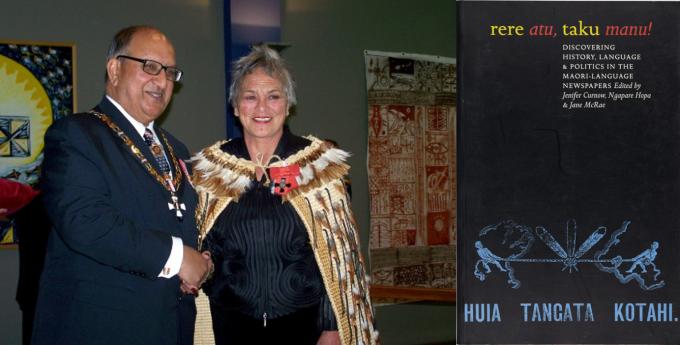
(L) The Rt Hon Sir Anand Satyanand GNZM QSO Governor General of New Zealand and Professor Ngāpere Hopa on her investiture in 2008, and (R) Rere atu,taku mau!
In the traditional Māori world, tā moko, or facial and body tattoo, was part of everyday life. Everyone had some patterning on their skin. Men wore elaborate designs on their entire faces; women were usually less complex but elegant, and both sexes had extensive body work. After almost disappearing in the 20th century, the practice is now experiencing a powerful revival, with many young urban Māori displaying tā moko as a gesture of ethnic pride and identity.
The book Mau Moko: the world of Māori tattoo (2007) is the result of many years of research by a team based out of the Te Whare Wānanga o Waikato - University of Waikato, including Professor Ngāhuia Te Awekōtuku CRSNZ, Professor Linda Waimarie Nikora FRSNZ, and Professor Ngarino Ellis. Early historical records and manuscript materials were used to review the history and technology of moko, and present day moko wearers and artists were interviewed. Community participation was an essential part of documenting the modern tā moko revival.
Mau Moko won a Montana book award in 2008 and a year later was selected as Māori book of the decade.
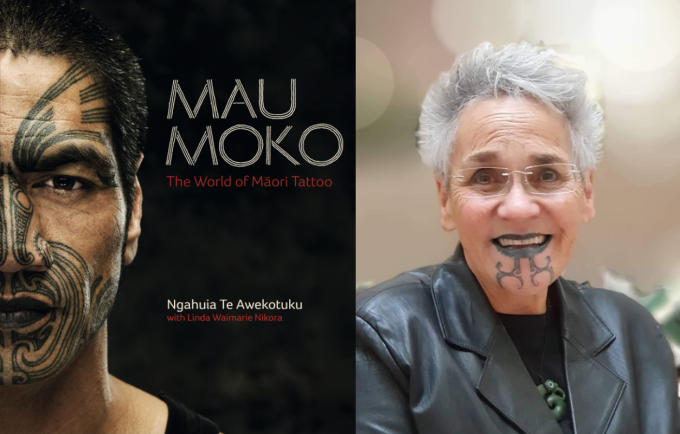
(L) Mau Moko and (R) Professor Ngāhuia te Awekōtuku
On 24 June 2022, Aotearoa New Zealand celebrated Matariki, our newest official public holiday - the first to recognise Te Ao Māori, and the first new public holiday since Waitangi Day was introduced in 1974.
Traditionally falling at the end of the harvest, Matariki was a time of abundant food and feasting. Matariki marks the Māori new year, and is a period of reflection and remembrance, celebration and festivities, and the promise of a new season. People all across Aotearoa New Zealand now gather to mourn lost loved ones, share kai, and celebrate.
Professor Rangi Mātāmua ONZM FRSNZ has been described as instrumental to that happening. His research originates from a 400-page manuscript – an astronomical record containing the names of 1000 stars and 103 constellations, and Māori practices, that was compiled by a father and son in Ruatāhuna between 1898 and 1933, at a time when many customs were ceasing to be practised due to colonisation. The son passed the manuscript on to his grandson, who later passed it on to his own grandson, Rangi Mātāmua.
Mātāmua has been widely recognised for his passion to engage the public in the interface between science and mātauranga Māori. This has included television shows, online and print publications, social media blogs, more than 100 public lectures, a museum exhibition visited by more than 100,000 people, and a best-selling Marsden-funded book Matariki: The Star of the Year written in both English and te reo Māori. His lecture tour in 2019 'Ko Matariki e ārau ana' ('The Gathering of Matariki') attracted sell-out audiences in Aotearoa and Australia.
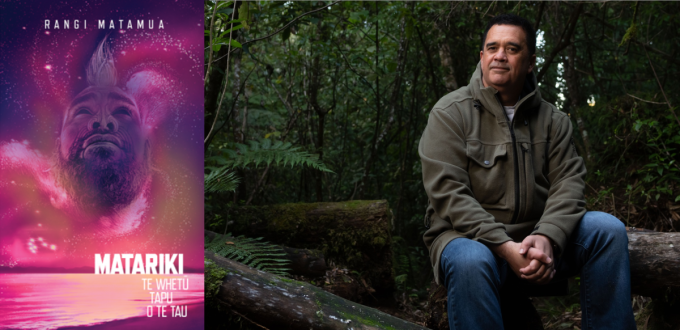
(L) Matariki te Whetū Tapu ō te Tau, and (R) Professor Rangi Matamua.
In 2023, an extraordinary piece of Māori cultural heritage returned to our shores. Te Rā, the only known customary Māori sail known to survive, is an important part of our nation’s cultural heritage. It was woven from harakeke (flax) more than 200 years ago and held in storage for many years at the British Museum. The homecoming of this taonga was a deeply significant moment for many New Zealanders.
Revealing complex weaving technologies, Te Rā is a symbol of Māori skill, innovation and adaptation, and the importance of voyaging in Māori culture. Dr Catherine Smith of Ōtākou Whakaihu Waka - University of Otago, Donna Campbell of University of Waikato and Ranui Ngarimu gained Marsden funding to study Te Rā, combining Māori weaving knowledge with innovative materials identification that provided insights into this unique object and the voyages that first brought people to Aotearoa New Zealand.
Te Rā was welcomed at a formal pōhiri at Christchurch Art Gallery Te Puna o Waiwhetū, 14th June 2023, then displayed at Tāmaki Paenga Hira Auckland War Memorial Museum. Originally scheduled to return to London in June 2024, the overwhelming public interest and engagement with the sail led to a loan extension until June 2026 by the Trustees of the British Museum.
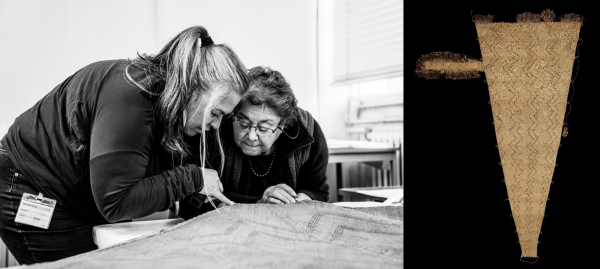
(L) Donna Campbell and Ranui Ngārimu at The British Museum, and (R) Te Rā The Māori Sail.
Art historians Professor Deidre Brown FRSNZ and Professor Ngarino Ellis, both of Waipapa Taumata Rau - University of Auckland, first received Marsden funding in 2012 to begin tracing Māori art from its Polynesian origins to present day.
Their research led to the 2024 landmark publication Toi Te Mana - a Māori art history, written by Māori. Over 600 pages, it follows the journey of Māori art from ancestral weavers to contemporary artists at the Venice Biennale.
A key influence on Brown and Ellis, the late Professor Jonathan Mane-Wheoki CNZM was there with vision at the beginning of the book’s writing, contributing some chapters and strengthening resolve to connect the many strands of Toi Māori.
In many cases, says Brown, the research is only just starting, with Toi Te Mana representing an important beginning to a new Aotearoa art history.
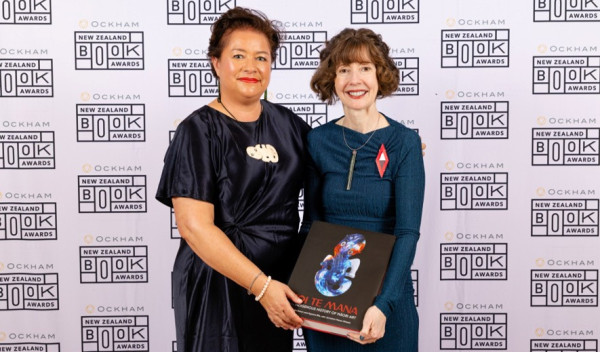
Professors Ngarino Ellis and Deidre Brown on winning the 'Bookhub Award for Illustrated Non-Fiction' at the 2025 Ockham New Zealand Book Awards for Toi Te Mana: An Indigenous History of Māori Art.
